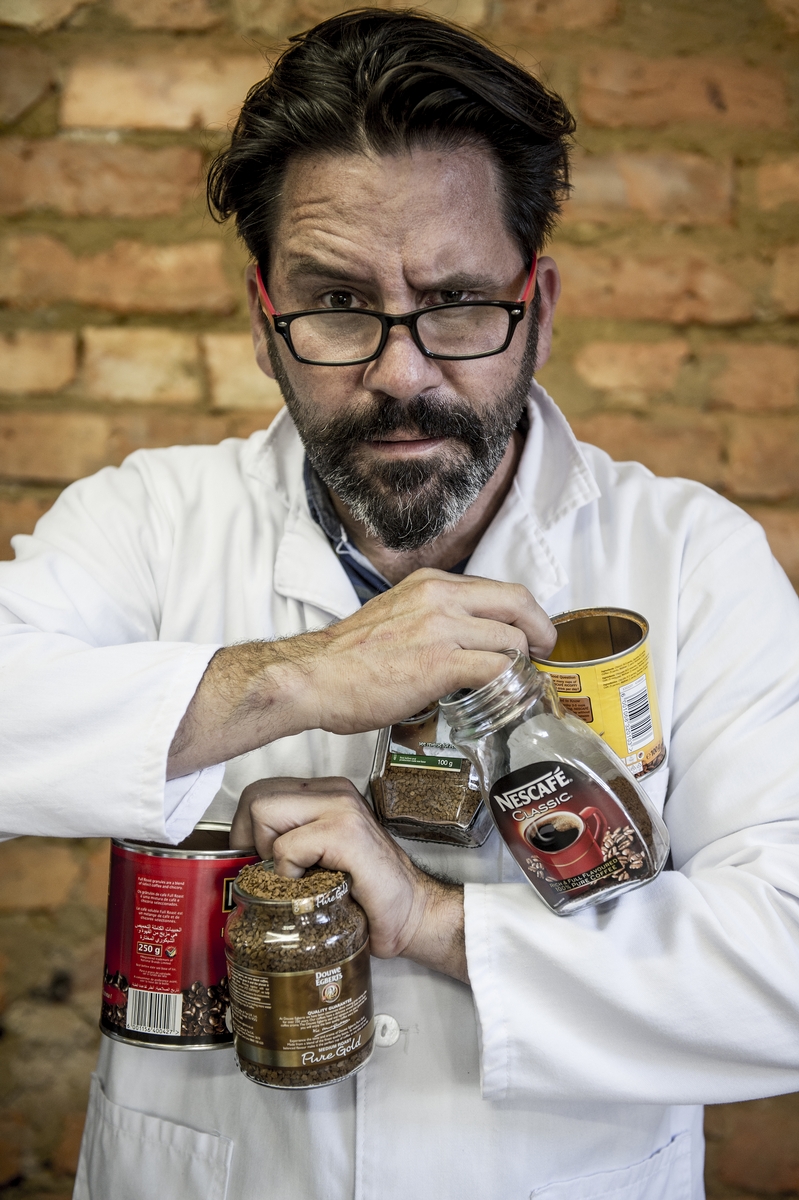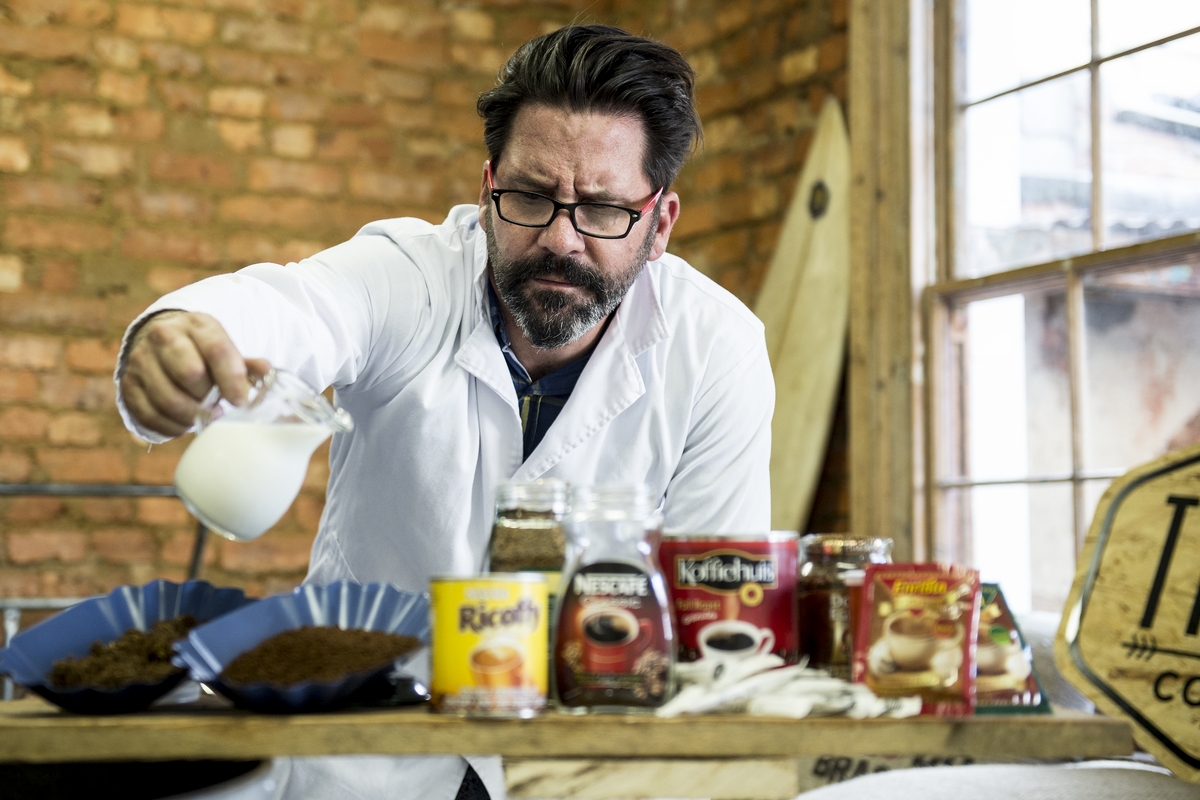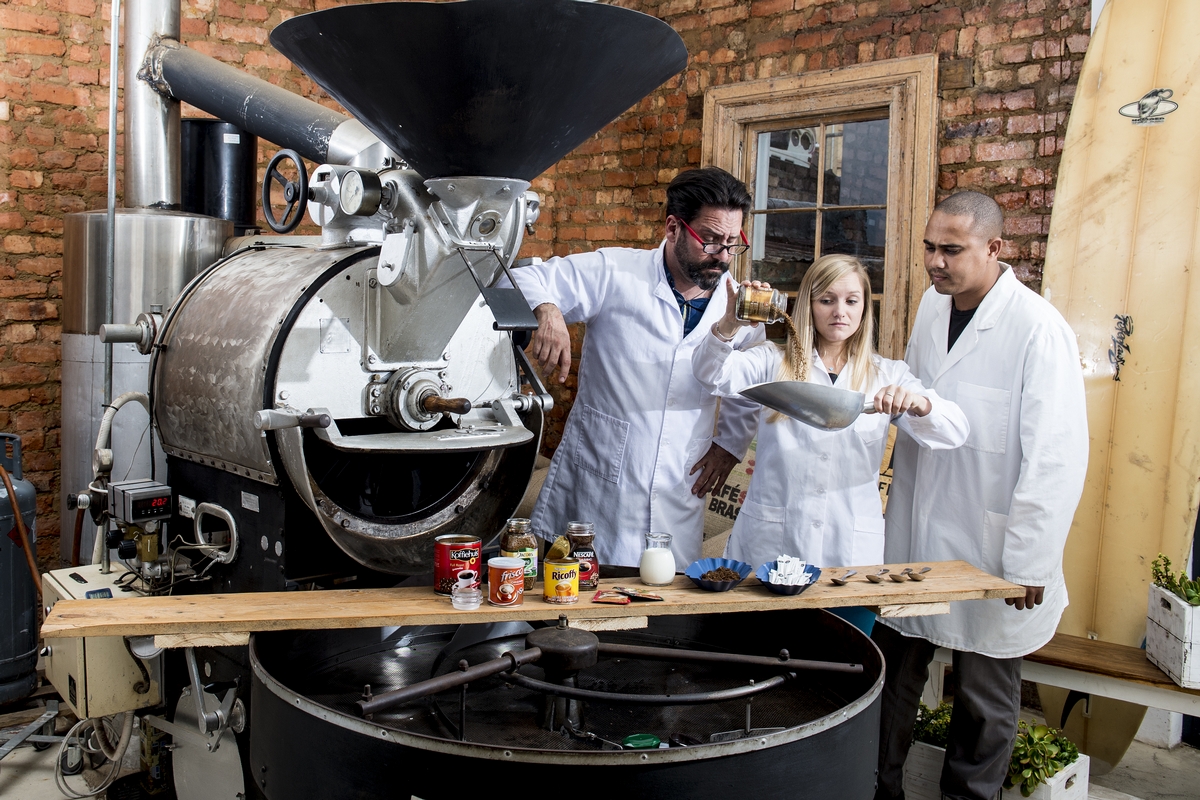Instant Gratification
Words by Jake Easton
Photos by Craig Kolesky
First published in Issue 8 of The Coffee Magazine
The speciality coffee community is still in its infancy in this country and the vast majority of consumers (even those who have converted to fresh roasted beans), still keep a bottle of instant in their cupboards. It’s ok, we’re not judging you! We wanted to investigate the coffee industry’s biggest and most controversial player. Who better to take on this challenge than a seasoned coffee roaster, someone on the opposite end of the coffee spectrum, a man who generally has something to say about everything, Mr Jake Easton. He dove headfirst into the freeze dried beans…

In the small world of South African Coffee there are any number of interesting characters who range from the heads of small businesses (less than 100 tons roasted a month), to café owners in Zastron (is a tiny agricultural town in the Free State), to tiny 2kg roasters in the far flung reaches of this beautiful land. As a part of this industry, I can tell you that the people in it really love the industry. It’s a small, exciting, fun, free from governmental abuse, temperamental, and good industry. On the whole, we get along nicely and play in our small sandbox together, sharing like good adults (well some of us). I use the word ‘small’ because on the global scale of coffee production we are minuscule, per a very well informed man at the recent 2015 Gauteng Barista Championships, “We import for annual production 16 000 tons of green beans to this country”. Here’s the kicker, the majority of that coffee goes into the production of Ricoffy and soluble coffee, roughly 11 000 tons. That ratio is relevant because it’s important to note that the instant coffee industry (better known as Water Soluble Coffee or simply Soluble Coffee) is so big that for many years it drove the coffee industry worldwide.
Nestlé (the lovely women and men who give us Nespresso and other nifty market beaters) claims that 5,500 cups of Nescafé are consumed every second. (Don't do the maths, its scary.) It works out to roughly 2 million plus kgs per day and about 780,000 tons a year.
I recently had a chat with Lionel de Roland Philip of I&M Smith, one of the oldest green bean importers into the country and he is currently the Chairperson of the Speciality Coffee Association of Southern Africa, in other words he is a seriously clever man in the World of coffee. He explained that the Freeze Dry method of making Soluble coffee loses 35% or more of its mass from roasting through processing; therefore, Nescafé produces roughly a million tons of coffee for Freeze Drying every year. Nescafé are market leaders controlling something like 30 to 35% of the Soluble market production. That means that over 4 million tons of coffee produced annually are for the sole purpose of Soluble Coffee. To quote a fantastic children's book, “Now that's a lot.”
Instant coffee was first patented in New Zealand in 1890 by Mr David Strang of Invercargill (Patent No. 3518). So we can blame the Kiwi's for foisting this sometimes insipid drink upon us all! There are rumours of it having been invented in 1771, but lets just give this credit to the Kiwi's and be done with it. The spread of its popularity could be attributed to post-World War II when resources were scarce but need for caffeine remained high. Many consumers decided that the convenience in preparing a cup of instant coffee more than made up for a perceived inferior taste. Perhaps that is still the case today.
There are two main types of Soluble coffee production (apparently one makes for better flavour than the other): Freeze Drying and Spray Drying.
The Freeze Dry method takes a roasted coffee bean and grinds it down to 0.5 to 1.1 millimetre granule sizes and then dissolves them in water at temperatures between 155°C to 180°C. This period of soaking in warm/hot water concentrates it into a solution of about 15% to 30% coffee by mass. This mass is then sublimated. Yes, that's really the word. The mass of wet coffee granules are rapidly frozen, placed in a drying chamber, a vacuum is created within this drying chamber, the chamber is warmed causing the water molecules to expand to ten times their previous size and a condenser attached to the vacuum removes all the water vapour, leaving behind Nescafe, Maxwell House, Koffiehuis, Douwe Egberts, Jacobs and many others. This is considered the higher quality method.
The second method called is Spray Dry. It takes the roasted coffee as above but grinds down to round particles of 300 micrometers (0.012 millimetres). This granule size is accomplished in some cases by high speed rotating spray wheels travelling at 20,000rpm which are able to process 27 tons an hour. These spray wheels have a very wide radius in order to avoid the condensation droplets on the inside of the drying chamber. This process takes between 5 to 30 seconds and the small particle size means the grains must be either steam fused into granule towers or by belt agglomeration (shaken baby not stirred). Ricoffy (a blend of coffee beans, chicory and glucose), South Africa’s most-loved uses this method.
Wow! Those are quite intense processes. While we can all agree that nothing is being added to the coffee, I think we can also agree that the beans are roughly tossed about in the name of convenience and longer storage time. Our small coffee industry outrightly scorns instant coffee and all that it represents. Let’s investigate why.
Well in two words, Taste and Aroma.
Our roasted coffees have inordinately more aromatic phenols and esters (over 900) than instant coffee (+/-300) in other words you can smell and taste the difference instant-ly.
That doesn’t change the fact that there's more instant coffee consumed in South Africa than roasted coffee by a factor of almost 3:1. So who am I to say that South Africa's favourite drink is anything other than loved? In the hopes of finding out how I can make a great cup of instant coffee I applied my sober mind to the idea that there must be a solution and what I found was there seem to be as many solutions as there are people. Of course, I had to try as many as possible.

In the Overberg the farm labourers use a pinch of BB tobacco along with three spoons of sugar and warm long life milk. I tried it. It is so clearly not coffee, but something otherworldly indeed. Compared to some imported coffee brands it tastes good.
In Gauteng, I was treated to Douwe Egbert dissolved in cold milk with honey added and ice cubes inserted to cool the blend. It was remarkably palatable; in fact it didn't taste like typical instant coffee but more like a well-stored Montecristo cigar (read: lots of Robusta aromas and tastes).
In Zastron, I was treated to an undeniably wonderful Irish Coffee that uses a tablespoon of sugar, a drop of boiling water, two spoons of Ricoffy, warm milk, a healthy triple shot of Jamesons and a dash of cinnamon on top. The Jamesons certainly mixed well with the sugar and Ricoffy and was a pleasure to drink neat. The obvious alcoholic concoction wouldn't pass World Barista Championship speciality drink standards but by Dionysian standards it was perfect.
In the town of East London, whilst trying to remember the misadventures of the night before, I was given a warm brew of milk and two types of soluble coffee, Jacobs and Maxwell House, a spoon of each with no sugar but the milk had been heated perfectly and released all of its natural sugars. It was interesting as a Babalas remedy, until I went back to sleep.
In the Tribe Coffee roastery I wanted to play with the savoury side of Ricoffy, so I experimented with Ricoffy and lime juice, Ricoffy, Lime Juice and Tequila, Ricoffy, lime juice, tequila and salt. The experiment was fun but led to more Tequila and no Ricoffy. Don’t try this at home kids.
The next day I added one tablespoon of Ricoffy to 40ml of 60% melted milk chocolate added a touch of micro-textured milk (70°C-82°C) whipped them together and added the remainder of milk to make a touch of Latte Art and wouldn’t you know it but the drink was good. Speciality coffee industry good. In the next moment I made a double shot Tribe Espresso roasted flat white and added the same amount of chocolate. The two drinks were miles apart. Both so different, and both of them, in the application within which they live, good to the last drop.
Now, will I convert to drinking soluble coffee as a result of these findings? Nope. But do I now understand why the majority of coffee consumers drink soluble coffee their way? Absolutely.



